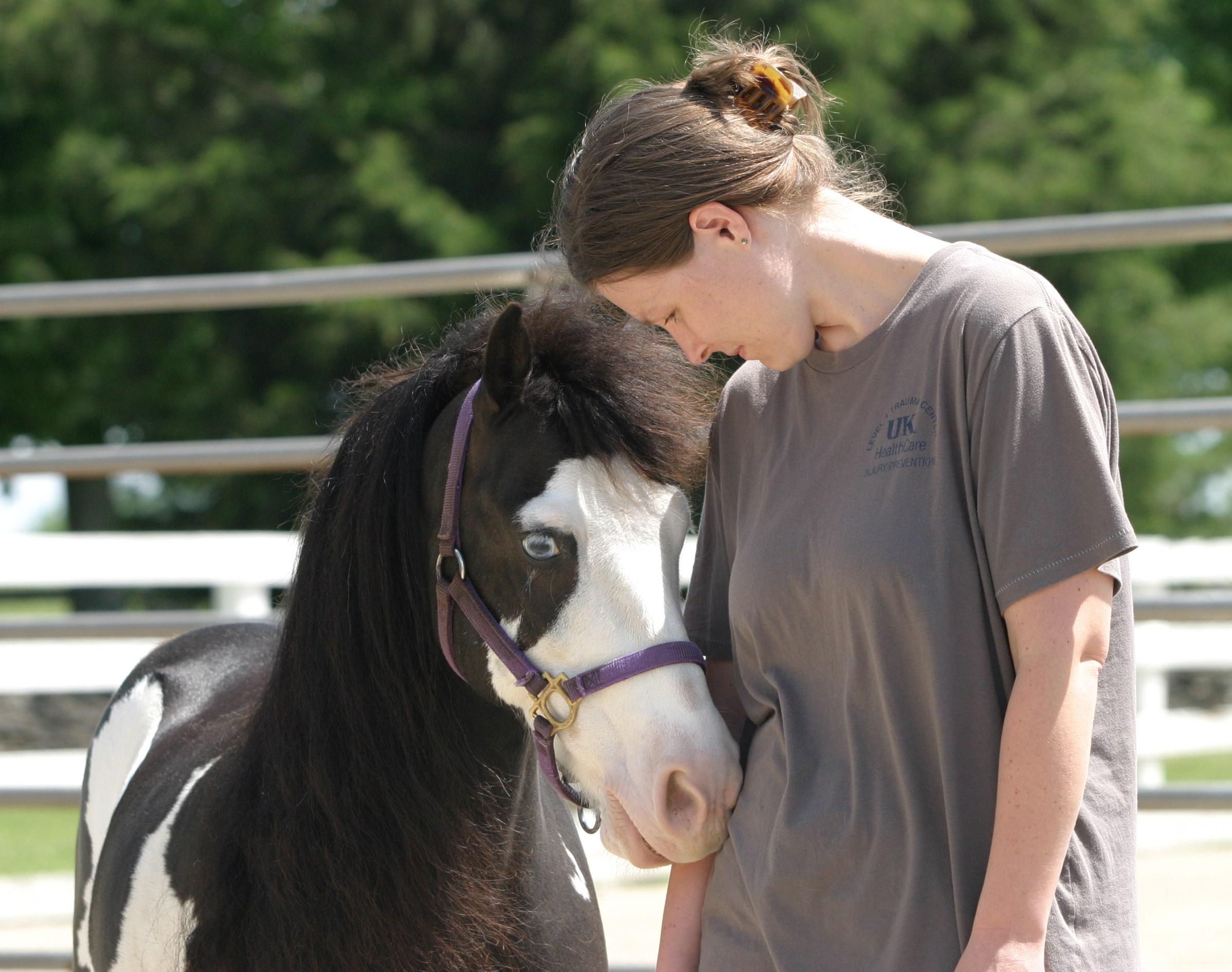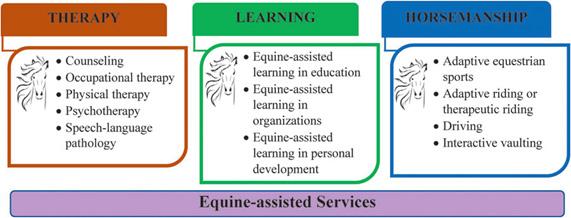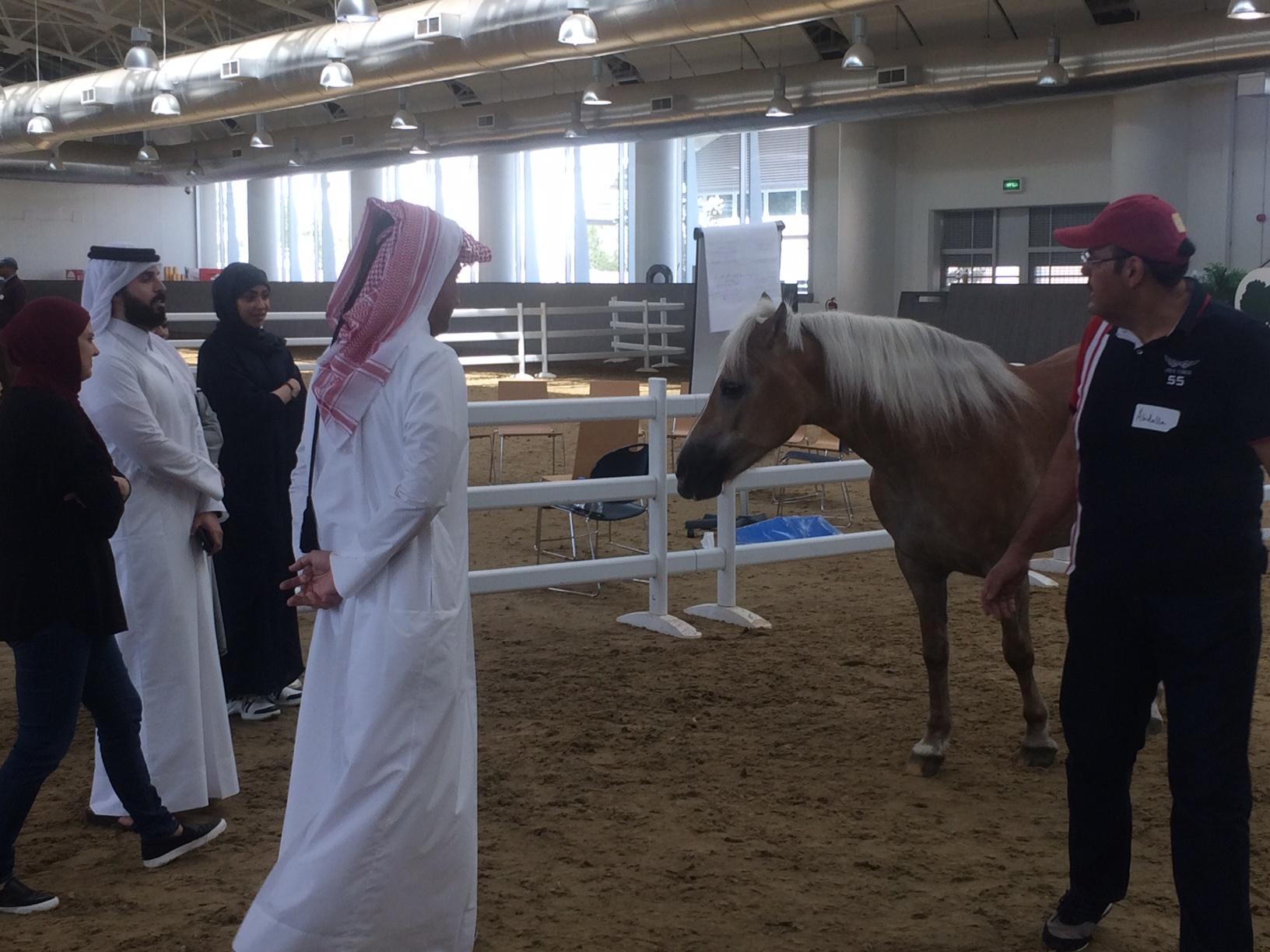Adoption of Uniform Terminology Assists in Legitimizing Equine-assisted Services (EAS)

Over the past 50 years, services that incorporate horses to benefit people have diversified and expanded. Along with the exponential growth has come the proliferation and use of unclear and imprecise terms for naming and describing these services.This, in turn, has generated many serious problems that include confusion and inadequate protection of consumers, reimbursement obstacles for certain types of legitimate therapy that incorporate horses, misinformed policies and barriers to scientific advancement through research.
To address these challenges, in 2018, the Bob Woodruff Foundation funded a two-year consensus-building process that was comprehensive, systematic and inclusive. It included convening a summit in July 2019 with experts and representatives from relevant national organizations associated with equine-assisted services. These organizations included the Professional Association of Therapeutic Horsemanship International (PATH Intl’), Eagala, the Equine Experiential Education Association (E3A), Certification Board for Equine Interaction Professionals (CBEIP), the American Hippotherapy Association (AHA), the United States Department of Veterans Affairs and the Bob Woodruff Foundation, among other practitioners and consumers of equine-assisted services.
The summit process culminated in a number of terminology recommendations. From there, a group of six summit members worked to further refine the recommendations for both the adoption of optimal terminology, and for the discontinuation of especially problematic terminology. These recommendations were recently published in the Journal of Alternative and Complimentary Medicine. The article (https://www.liebertpub.com/doi/10.1089/acm.2020.0415) by Wendy Wood, Kathy Alm, Joann Benjamin, Lynn Thomas, Debbie Anderson, Lissa Pohl and Michele Kane is titled, “Optimal Terminology for Services in the United States That Incorporate Horses to Benefit People: A Consensus Document.”
Article Summary
“The purpose of adopting optimal terminology is to enhance consistency, clarity, transparency and specificity when communicating about services that incorporate horses to benefit people. These terms are intended for use in the United States but are welcome to be used more widely,” the authors wrote.
Below are the key highlights from the paper while full definitions and rationales for term usage are outlined in the published document.
Equine-assisted Services (EAS) is recommended as the optimal and unifying term to refer to multiple services in which professionals incorporate horses and other equines to benefit people. Presently the most common term used, though problematic, is Equine Assisted Activities and Therapies (EAAT).
“(EAAT) has been misrepresented as a single form of therapy that is simply called EAAT. In actuality, no health profession, practice standards nor licensure regulations are known to exist for any single form of therapy called equine therapy, equestrian therapy, horseback riding therapy or EAAT,” the authors wrote. “Yet, widespread adoption of such terms has created obstacles for reimbursement of legitimate therapies and influenced the development of misinformed policies.”
Since the term equine-assisted services represents a variety of different services offered to individuals or groups, it is recommended to refer to the exact area of service (i.e., psychotherapy incorporating horses, or equine-assisted learning in personal development or therapeutic riding) when describing these services.
Recommendations for 12 Distinct Equine-assisted Services
The diagram below shows how a variety of equine-assisted services fall under the broader industries of therapy, learning and horsemanship and where professionals with specialized training and certification can provide opportunities for people with diverse needs to benefit from the skilled incorporation of horses into their services.

Therapy
Therapy-first language is recommended when the emphasis is on the specific licensed discipline that is providing the service. (For example, pysical therapy using equine movement; or psychotherapy incorporating horses.)
According to the authors, when licensed therapy professionals adopt therapy-first language, accurate representations of their profession and transparent communication with clients and insurance providers regarding reimbursable services can occur. Standard licensed therapy practitioners who offer counseling, occupational therapy, physical therapy, psychotherapy or speech and language pathology may incorporate horses, equine movement or equine interaction within a comprehensive plan of care for improved health, wellness and function of their client.
Learning
Equine-assisted Learning (EAL) refers to experiential learning activities facilitated by qualified professionals that leverage horse-human interactions to enhance the growth and learning of their clients. There are three distinct nontherapy EAL services: equine-assisted learning in education (EAL-E), equine-assisted learning in organizations (EAL-O) and equine-assisted learning in personal development (EAL-PD).
EAL professionals should possess appropriate training, experience and skill in facilitating the particular content of equine-assisted learning as well as demonstrate extensive knowledge of horse behavior and handling, human/horse relationships and design of experiential learning activities involving horses. It is also very important that EAL practitioners are able to clearly differentiate between therapy and learning when working with their clients. This is to ensure the client’s emotional safety and for minimizing liability risk.
Horsemanship
Under the area of horsemanship, there are four distinct nontherapy services that are adapted from the traditional equine disciplines of horseback riding, driving and vaulting to match the abilities and diverse needs of participants who experience restricted participation in life situations. These services include adaptive equestrian sport, adaptive riding or therapeutic riding, driving and interactive vaulting and are offered by trained/certified professionals. These types of services assist participants attain individualized horsemanship skills and allow for the healthful benefits of riding and other horsemanship activities to occur.
Problematic terminology recommended for discontinuation
The consensus-building process culminated in recommendations that specific terms be retired from widespread usage owing to their problematic impacts. Terms recommended for discontinuation include equine therapy, equestrian therapy, equine-assisted therapy, equine-assisted activities and therapies (EAAT), hippotherapist, hippotherapy program/clinic, horseback riding therapy, therapy riding and any non-specific reference to services that incorporate horses to benefit people. There is no profession, academic degree, professional license or state regulation known to exist that supports the terms above as legitimate stand-alone therapies.
“Altogether, terms recommended for discontinuation were found to be potentially legally indefensible for providers and to have misled other stakeholders,” the authors wrote.
The importance and benefits of using optimal terminology
For decades, various stakeholders have had to grapplewith the damaging effects of ambiguous, imprecise, misleading and confusing terminology. Though there has been much discussion about terminology amongst experts in the field, until now there has never been a comprehensive effort to define, recommend and use optimal terminology.
Everyone benefits from the adoption of optimal, common and precise terminology. Professionals and equine facilities can more effectively market their services and reduce liability risk. When researchers use clear and accurate terminology in naming a service under study, its exact nature is best clarified and its scientific foundation can be progressively built. Research that utilizes consistent terminology makes it much easier for stakeholders to find quality research to support decisions about the services. When treatment services are identified more clearly and accurately, third party payers and consumers can be assured of receiving and getting reimbursement for beneficial therapies.
When Equine Assisted Learning is clearly separated from therapy services or horsemanship services, both EAL practitioners and consumers benefit by understanding exactly what type of experience they are going to have and pay for.
Last but not least, the widespread adoption of optimal terminology will help to sustain services that are preserving an invaluable role of the horse in society, while simultaneously benefitting and enriching people’s lives.

Lissa Pohl, MA, is program and outreach extension associate in UK’s Department of Community and Leadership Development in the College of Agriculture, Food and Environment. She is one of the authors on the paper referenced here.
